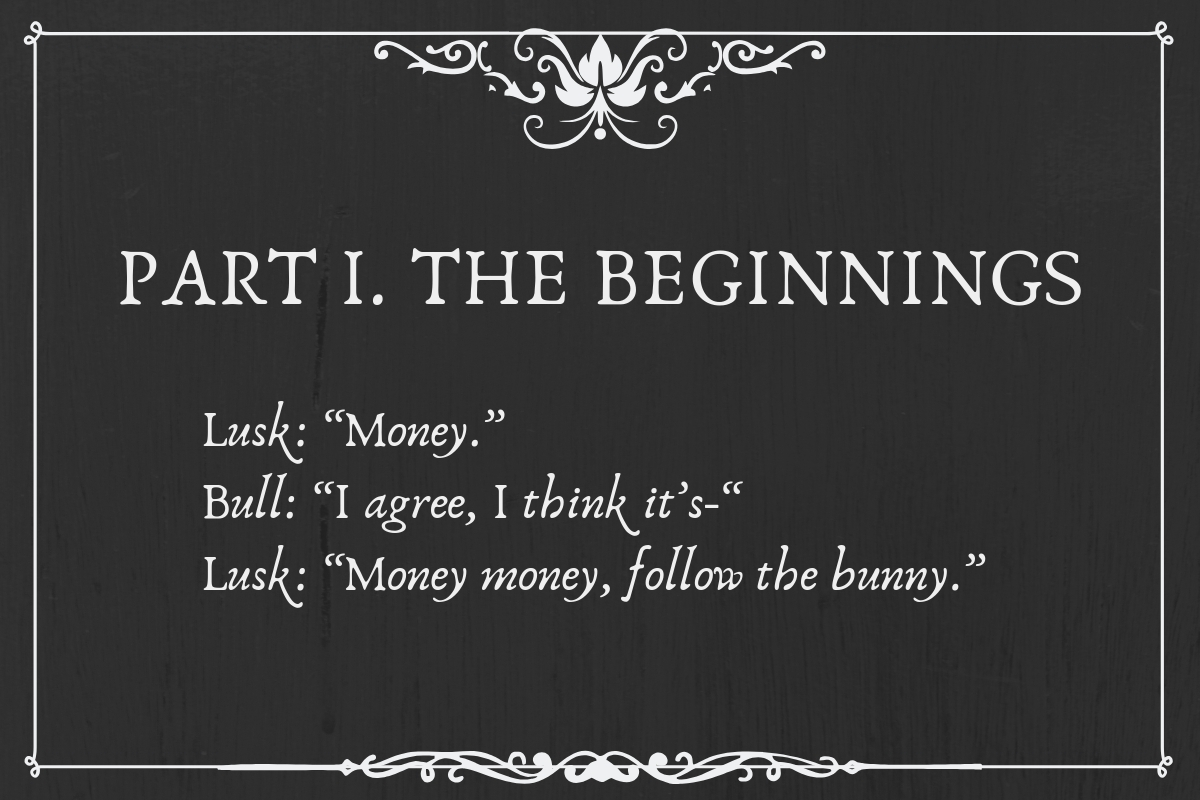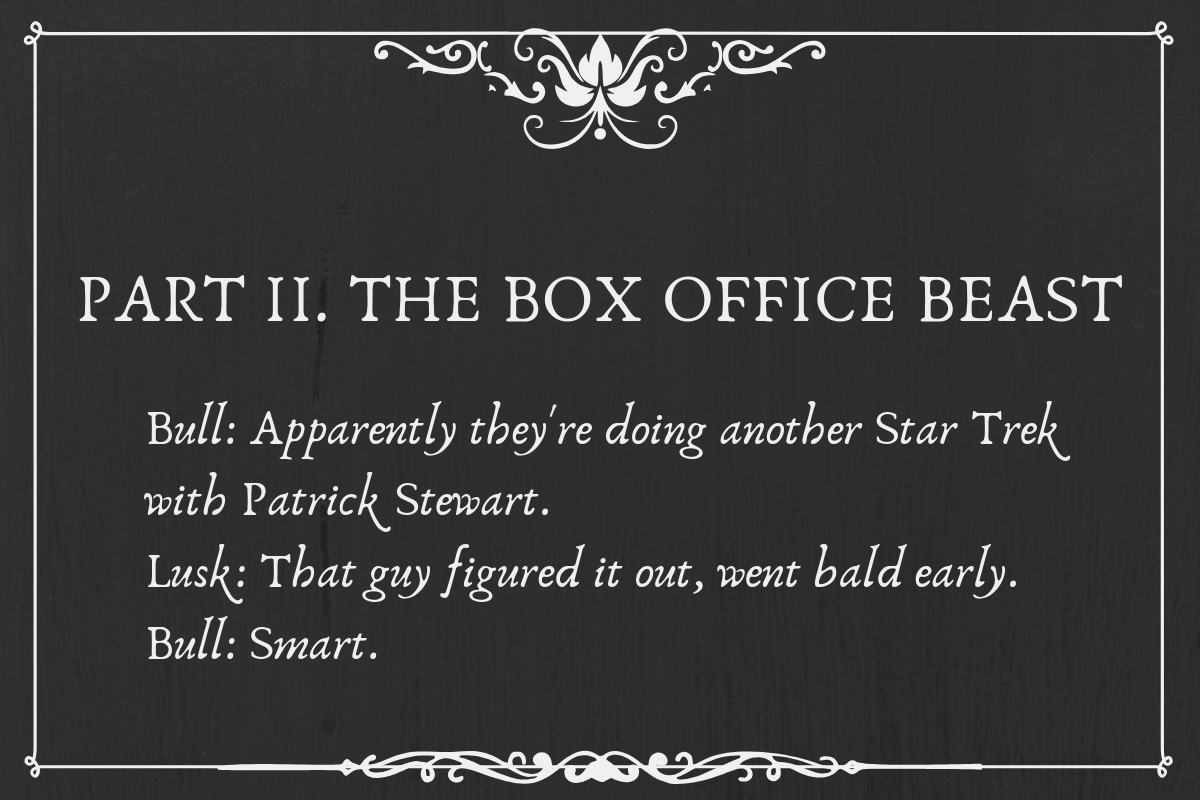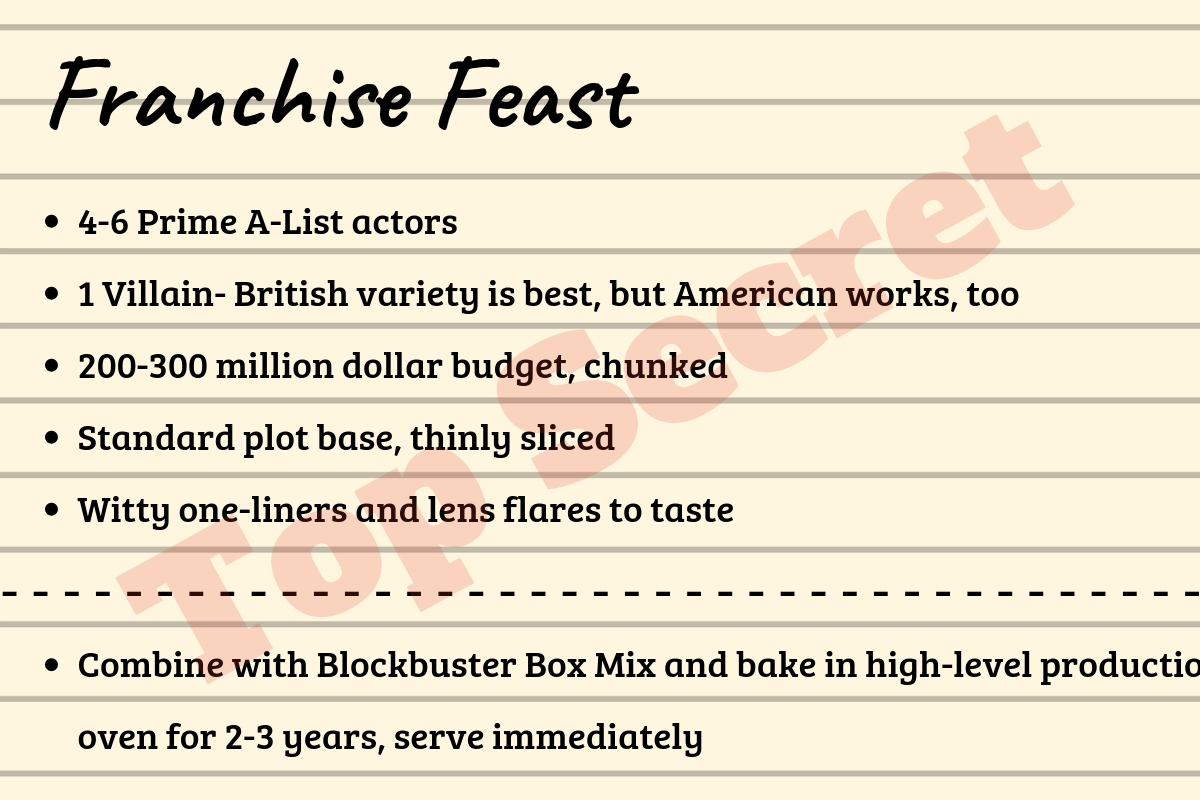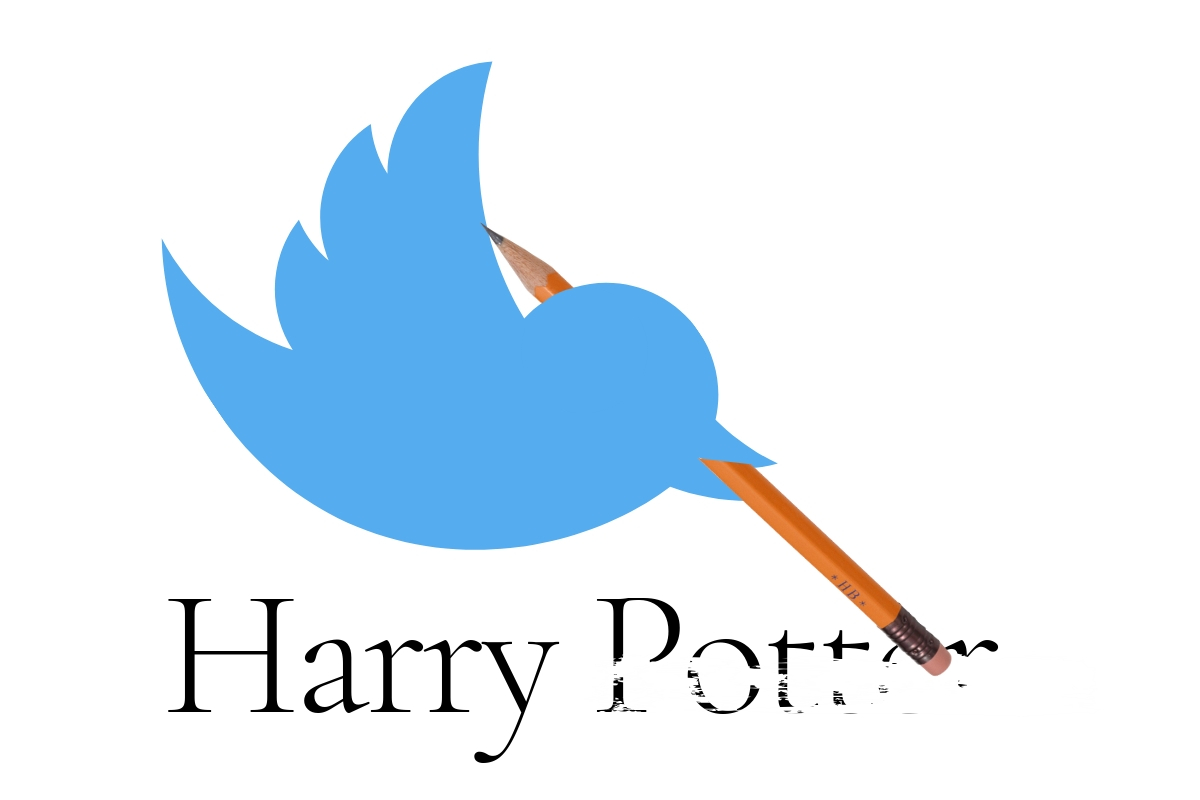
Committed to graduate in 2020, Laura Madler is Editor-in-Chief and fourth year staff writer for the Lion's Roar. Outside of class, she can be found twirling...
Is film really dead? Or are movie universes just the next medium for creativity? Ryan Bull and Richard Lusk investigate.
March 19, 2019
Film is dead.
A grim proclamation, yes, but the sentence that started in melodramatic circles of snobbish film critics has come to bear more accurate meaning in the modern cinematic world. As we creep further into the 21st century, movie fans can’t swing a dead cat without hitting another bloated sequel, reboot, or remake from the major production studios. Series upon series and ever-growing cinematic universes continue to rake in box office earnings without much effort, snatching our $10 for tickets and leaving unnerving questions once the popcorn is gone.
Is the era of creativity and original film gone?
Has entertainment become a game of content over quality?
Are all movies and TV shows going to condense into massive cinematic universes?
Who can shed some sense on the perilous predicament of moving pictures?
In these troubling times for talkies, it is necessary for movie lovers to turn to the experts for answers. Here with their two cents are LaF Podcast co-hosts Ryan Bull and Richard Lusk, who examine the progression of blockbuster universes and endless reboots in a three-part article (series):
Part I. The Beginnings
Part II. The Box Office Beast
Part III. Future or Fin?
When exploring the topic of movie universes and sequels, it is necessary to consult the professionals. In Part I of the “Death of Film” series, creators and hosts of the LaF Podcast Richard Lusk and Ryan Bull discuss the origin story of movie universes and their growth in the box office.

Go open a new tab, type in the name of your nearest movie theater, and look at the list of movies playing. What do you see? Do you notice something a little strange? Look closer. I’ll bet there’s at least one Marvel movie, more sequels or installments in a series, and maybe a Disney “live-action” remake for good measure.
This isn’t psychic vision here- it’s the pattern of the modern movie industry. Original films are small potatoes. Instead, theaters are looking at three live-action Disney movies, three new MCU movies, and unavoidable scores of sequels just in the next six months after this article’s publication. This begs the question- how did this happen to film?
The origin of the sequel is not hard to pin down. When a movie is successful and the story can be extended past one release, logically production companies will follow up films with a sequel. After all, if you already have a fan base for a movie, it’s even easier to make money off the next installments because there’s a guaranteed audience. Sequels now are often planned before the first movie even comes out, with most studios aiming to hit the jackpot “franchise” status with every new idea.
“It used to be sequels were where you make your money, and you still do, but the problem with the sequel is that it comes out every two to three years,” explained Bull. “Now someone goes to the movies and you show them a trailer for something that’s coming out in four months; you sell them on the next thing before they’ve even seen the thing they came to watch.”
“The traditional trailers used to appear at the end of movies, now they’re generally at the beginning or online,” Lusk added. “Now with the Marvel Universe that you mentioned earlier, they have those stingers and the mid-credits scene sequences, and they kind of link together all the storylines and they sort of generate interest so there’s this perpetual machine [of sequels].”

Nowadays, studios have extended this moneymaking logic even further, creating massive universes – like the infamous Marvel Cinematic Universe, or the new kid on the block, JK Rowling’s Wizarding World. These franchises can support multiple movies in theaters at the same time within the same year, layering on characters, crossovers, and callbacks to other aspects of the universe to keep fans coming to the movies.
The first instance of the movie universe is hard to pin down. Some people, like horror film fanatic Bull, trace crossover entertainment to the horror films of the late 20thcentury, which used hints of other characters to build anticipation for sequel movies (even if those films didn’t come into fruition until decades later). Others, like Lusk, see slight crossover happening even earlier, like the combination of literary heroes Cyrano de Bergerac and d’Artagnan the Musketeer in the campy 1964 French adventure flick, Cyrano et d’Artagnan. These are not quite at the successful “universe” level of franchise function, however. Many film buffs generally agree on Star Wars being one of the first franchises to latch onto the universe shtick, starting with a trio of movies that launched comics, books, video games, cartoons, 6 more feature films, and an ill-fated Christmas special.
“That would be the most obvious example because those cartoons came out in the 90s, right, and then you had the prequels. So you had, not just in terms of movies, but just in terms of like fiction and fictional representations, like cartoons, like comic books, and novelizations of the movies, and they took different characters in different directions,” Lusk reasoned.
Even the silver screen is getting in on the action. The CW notoriously houses a host of intertwined DC Superhero shows in their “Arrowverse,” named for the Green Arrow. Netflix supports a bulk of Marvel’s supporting tv series, and the production company joined efforts with the CW to create the incredibly macabre Archie Comics universe, which currently supports the series Riverdale and Chilling Adventures of Sabrina.
“They don’t want you to wait a year for the next season to come out,” said Bull on the constant stream of content. “They want to sell you on Riverdale. When you finish Sabrina, then go watch Riverdale. By the time you finish with Riverdale, hopefully, we’ll have another season of Sabrina ready to go for you.”
The constant churning out of movies and series installments is a natural step in modern film as studios amass more resources and technology available to keep up with demand. After all, the field of entertainment is a field of insatiable appetites- fans want more content, moviemakers want more money and publicity, and the companies behind it all want the most profitable franchises possible. It’s an appetite, Lusk said, that is only satisfied by these universes, sometimes valuing quantity above quality. He likens movie universes to fast food, which isn’t meant to be remarkable, but just adequate enough for mass consumption-

“I mean it’s the McDonald’s effect. People want to be able to get the same hamburger every time they go to McDonald’s and they don’t even realize that it’s not very good.”
Movies are in a period of unchecked and unparalleled growth. Expansion into series, universes, and reboots is consistently popular and bankable. From the humble origins of three-part series and single-story superhero movies comes the great hulking beast of 21st century film production.
How do the movies look today?
When exploring the topic of movie universes and sequels, it is necessary to consult the professionals. In Part II of the “Death of Film” series, creators and hosts of the LaF Podcast Richard Lusk and Ryan Bull discuss how franchises and universes dominate the box office and what happens to story quality once sequels start rolling.

It’s often said that if you haven’t started watching Marvel movies by now, you ought to give up – just getting through the official phase films of the Marvel Cinematic Universe (as of January 2019) would take close to 43 hours, and that’s not even considering supporting movies, Marvel TV shows, or Marvel’s major phase 4 blockbusters coming to theaters over the next few months.
“I hate Marvel,” grumbled Lusk. “It’s always the same to me. And I know that they’ve changed things up, and they’re aware of their frailties and the fact that they’re formulaic, but to me it’s always the same thing. There’s always the same demon or problem at the end, they always have to save the world, save the universe. Go bigger, bigger, bigger- and it’s annoying.”
Marvel is just one of the hulking (pun intended) enterprises dominating movie marquees today- the box office beasts. Its fellows include the likes of Star Wars, the Wizarding World, and Disney’s live-action and sequel domain. What’s worse? Three-quarters of those heavy hitters are all under the ultimate control of a few people at Disney.
So how do these massive universes and series get to such a successful standing in theaters? Besides ungodly amounts of money from production studios (here’s to you, $379 million budget for the lackluster Pirates of the Caribbean: On Stranger Tides), these films have successful formulas and a fan base devoted to their success. These studios have had years of practice to determine exactly what sort of plot, special effects, and casting they need to make the most money at the box office- and you can be certain that they’ll stick to the formula.

“As far as Marvel is concerned, they’ve sort of figured out the formula so they do a pretty good job with appealing across the board,” noted Lusk, citing the predictable action sequences and supervillains. “But then Star Wars failed with Solo pretty much, so the formula is there, but I don’t know if it always works. The equation doesn’t always match up.”
Bull chimed in with a critique of the formulaic storytelling and drawn-out franchises – “Eventually you run into the problem of you don’t have something new for the characters to do. There’s not a new challenge, there’s not a new character arc, you’re just rehashing old ideas. Whether it’s Star Wars or in horror movies, there are only so many times Jason can be a killer or Freddy Krueger can come do something.”
“That’s the thing with these franchises- there’s always going to be weak links, and you can’t appeal to every single person,” Lusk reflected.
Scores of failed sequels come to mind, from Indiana Jones and the Kingdom of the Crystal Skull to shortcomings in the Fast and Furious franchise. Formulas can be a crutch for lazy, even flat out bad, storytelling. Originally well-received and innovative movie concepts sag with the dragging weight of cheap spin-offs and unnecessary installments. And, yet, the fans continue rushing to theatres every time their favorite series is revived.

Take for example the recent revival of Star Wars. After three critical and pop culture milestones with Episodes IV-VI, George Lucas came back in the late 90s-early 00s with three prequel episodes and far too much access to CGI. The resulting films were a perfect storm of mediocre acting, rough special effects, and insufferable side characters that marred the series and became the punchline of jokes from fans and critics alike. In the 2010s, it was announced that JJ Abrams- the mastermind behind the successful modern Star Trek films- would be taking the reigns and releasing a slew of new episodes starring a new generation of heroes. His films would be heavily reliant on cameos from the original cast, hints of the original series, and familiar storylines just to keep audiences in the seats.
Lusk chalked this success of the recent Star Wars movies up to a potent combination of nostalgic references and adaption to earn the affections of fans both new and old.
“There were a lot of callbacks to things that people liked, you mentioned Easter eggs, but they might even be more sort of substantial motifs- not just the blue milk, but the idea of a person, an orphan trying to find his or her way through this experience in this world. The fans kind of wanted to see that I think.”
“As far as Disney and Marvel and Star Wars are concerned,” he added, “now I don’t think they care what the old fans want. They have to now appeal to 7 through 11 year-olds to keep the machine rolling. So, it’s not that they dumb it down, they’re just creating that like the new droid BB-8 is obsessively cute you know. He appeals to Star Wars fans as a callback to R2-D2, but also I think he’s really popular with younger kids, and that’s the cornerstone of keeping a franchise rolling- it’s making and creating new fans so [producers] can just use the patterns that they created with those old films.”
“Fans want more of the same,” commented Bull. “In music we want the same bands, in literature we want to read the same authors, but with movies we don’t want new original properties. We want Lucas to just keep making Star Wars, we want James Cameron to keep making Terminator, we want Alfonso Cuarón to come back and do the Harry Potter films and not let David Yates ruin the franchise,” he joked.
The last part of the sentence brings up an interesting point in how fans feel these universes are handled. The Yates-directed films in the Harry Potter franchise have often been chastised for their gloom, butterfingered approach to the source material, and overall inferior artistic direction in comparison to earlier installments (notably Harry Potter and the Prisoner of Azkaban, directed by Academy Award-winning director, Alfonso Cuarón). In recent years, fans of the original series have pushed back even more against the creator of the universe, author JK Rowling. Rowling’s retroactive changes to key characters, plotlines, even timelines, as she crafts add-on plays and movies to her wizarding world have left fans angry with what they see as a lack of regard to the original source material. Whether she’s revealing unpleasant factoids on twitter or claiming that the villainous Lord Voldemort somehow had a secret child in the seventh book, fans have equally laughed and raged in the face of Rowling’s world-building, with her creative process becoming a cruel internet meme.

Fans feel a certain ownership over the stories and characters put out by franchises. A writer gives the audience a limited base of characters and plot, but the audience is free to imagine what happens to the characters when the official story ends. When original creators then add on to their stories and contradict the closure that fans have created in their heads, there can be backlash. As Bull phrased it, “After the first couple stories, the fans feel like they know these characters better because they’ve lived with these stories, re-watched them so many times, and they feel that they know better than the original author.”
“In Harry Potter we’re seeing that [fan rebellion] with Rowling, we’ve seen that with Star Wars. People don’t want Lucas’s version, or they only want the version [of the story] that’s true to them, but that never existed,” Bull continued. “With Fantastic Beasts they’re saying, ‘It’s not true to the ideals of Harry Potter,’ when really the author of Harry Potter wrote the screenplay.”
A massive fanbase and strong dedication to the franchise universe really only benefits the studios and producers behind the movies. Every new addition to Star Wars or Marvel will have a guaranteed audience, every movie they put out is guaranteed to be a relative success. Fans’ feelings are not going to stop them from buying a ticket to the next installment, but instead the disappointment or confusion in the lackluster story is targeted toward the authors and creators behind the original content, who are often minimally involved once a universe takes off.
“I think as soon as the author writes the words down the page, it’s not theirs anymore. With Stephen King, his version of The Shining is not the version people love, right? He disavows the Stanley Kubrick one, which is one greatest horror movies ever. He goes ‘It’s completely wrong, they got the tone wrong, they got the ideas wrong…’ but he’s the only one who feels that way.”
So universes and franchises can misinterpret original creators, they can leave fans disappointed, and yet they’re the most bankable movies on the market. These hulking box office beasts secrete sequels at an extraordinary rate, and their unchecked power makes them the face of 21st-century film.
But what happens to the little guys? What happens next?
When exploring the topic of movie universes and sequels, it is necessary to consult the professionals. In Part I of the “Death of Film” series, creators and hosts of the LaF Podcast Richard Lusk and Ryan Bull discuss the future of the Film Academy and cinema itself.

If I asked you to name any movie that won Best Picture at the Oscars in the past five years, could you do it?
Try it.
Maybe you remember the hubbub about Moonlight when it was awarded Best Picture in the envelope snafu of 2016. Perhaps you knew about Green Book from all the Twitter outrage after it snagged the award this year. But, let’s be honest, no one remembers Birdman or The Unexpected Virtue of Ignorance– no one saw it.
Obviously, some people watched these films- critics, people with season tickets to the local art-house theater, and yes, genuinely curious moviegoers. Some people watched these films, but not many- just take a look at the numbers.
These stats compare the past five Best Picture winners to the past five installations in the Marvel Cinematic Universe (MCU); it is worth noting that Marvel put out all of these films in 62 weeks, and these stats were taken just 11 days after Endgame’s release. Take a look at the domestic box office numbers- the total earned by the past five Oscar winners is just 10% of Marvel’s domestic earnings in a year, even when Endgame has only been in theaters 11 days at time of story publication. Anyone could guess that Marvel makes some serious bank – over 5 million domestically per day over the last five films- but the numbers show a staggering difference in comparison to the Oscar bait. And sure, Marvel might not be the best comparison with Oscar winners due to their reliable blockbuster success, but even run-of-the-mill movies released this year, like Mamma Mia 2 and Ocean’s 8, consistently outperformed Best Picture winners by at least 100 mil or more.
What’s the takeaway? “Best Picture” doesn’t mean most likable.
Shortly before the 2019 awards season really kicked off, the Academy of Motion Picture Arts and Sciences announced the addition of a “Popular Film” category, which would target such popular blockbusters that year as Black Panther and Crazy Rich Asians. Predictably, people rioted on the internet; fans of the movies complained that this category would cheapen the stories and downplay their significance, while film critics regarded a new category as pandering to subpar stories for the sake of getting people to watch the Oscars. In the end, the Popular Film category was postponed until at least 2020, and Black Panther scored a Best Picture nomination in one of the most eclectic groups of contenders in years.
“I still don’t think a lot of these blockbuster franchises will win those awards,” Bull commented – and it would seem he is right. Everyone knows how the Oscars ended, but let’s take a look at the 2019 Golden Globes- the “Oscars Lite,” if you will. The two best picture awards of the night were won by movies seeped in controversy- Green Book for Best Comedy, and Bohemian Rhapsody for Best Drama. Both movies faced scandals throughout filming and release, and the general critical consensus issued a resounding “meh.” Black Panther, on the other hand, was widely praised by film critics and secured three nominations that night- they walked away without a single award.
“I think the Academy breaks apart,” Lusk commented grimly. “Hollywood likes to reward themselves and pat themselves on the back, but they can’t even find someone to host the Oscars.”

When an institution like the Academy fails to grab public attention- for the right reasons or not- it will die. For the past few years, the awards ceremony has persisted on a diet of scandal and media discourse. Not many in the audience watch to see how many trophies films like Vice can take home. They watch to see if a host-less Oscars ends in disaster, if the #OscarsSoWhite campaign has any effect on the winners, if the Times Up movement changes the red carpet. The popular film category is just an extension of the drama-for-views mechanism.
“Really, the new category of popularity is just them trying to remain relevant,” Lusk sighed.
“Yeah, no one really knows the last time a popular film won Best picture,” added Bull, “Probably the Lord of the Rings: Return of the King, years ago.”
“And now it’s all arthouse theatre. You watch the Independent Spirit Film Awards- it almost has the exact same nominees as the Oscars,” noted Lusk. “I think there’ll be a group of people that like and listen to the Oscars, but it’s not the same people that go and watch Marvel films or Star Wars movies- they don’t swim in the same pool.”
So let’s say the Oscars die out, no more Academy. Without some incentive for artsy films and critical competition, what sort of movies will be made? The answer may have already shown itself in the odd 2019 crop of nominees- Black Panther, Bohemian Rhapsody, A Star is Born.
Obviously, superhero movies like Black Panther will still exist- the nth iteration of Captain America will be playing in theaters when the world ends, guaranteed. Between DC and Marvel, massive, expensive superhero movies remain a constant, unwavering force in the box office. Bohemian Rhapsody brings in a new generation of music-focused blockbuster movies, including the upcoming Rocket Man and Yesterday. Catchy tunes, nostalgia, and current stars like Rami Malek and Taron Egerton will bring moviegoers of all ages to the seats – no matter how much film critics complain about the writing and editing. A Star is Born, however, unleashes the power of the fastest growing tactic in entertainment- the remake.
“A Star is Born- that’s a remake of a remake,” Bull chuckled, “of a remake.”
“You don’t want original properties,” he explained, “You want to know that you have bankable fans, and if you’ve got a film that’s 25 years old, you know the ten year olds are now parents and have ten year olds of their own, and that’s why we have a remake of Lion King coming out and Aladdin and Dumbo- because they know those are bankable things, people are going to want to go and take their kids to it.”
“They’re also at the point now where you’re going to have to start recasting iconic roles,” Lusk jumped in, wondering how other franchises could fare with the Bond treatment.
“And Mary Poppins isn’t a remake per se, but it’s close enough; it’s a spiritual remake,” continued Bull, “They’re banking on parents remembering the movies they love from their childhood and wanting to share those experiences with future generations.”
Just look at Disney- since Tim Burton’s take on Alice in Wonderland in 2010, the studio has released nine live-action remakes of classic films, with new versions of Lion King, Maleficent 2, and Lady and the Tramp due out by the end of the year. Will these be any good? Well, they don’t have to be- regardless of what Rotten Tomatoes says, people will want to hear Beyonce in Lion King or see what Angelina Jolie does next as Maleficent. Disney has mastered the element of star power, and these remakes aren’t going away any time soon.
This is the way film goes: the universes and franchises continue to expand and conglomerate, forming an amoeboid box office beast that changes the very idea of motion picture.
Hold on…hold on.
Netflix, the prime bulwark of binge-watching, threatened? It might not be as unlikely as it sounds. The monopolistic streaming service hasn’t necessarily been performing on the stock market recently, and now they’re engaged in legal battles to keep their content rights (namely those for The Office, the most-watched show on Netflix). Going forward, Netflix will face major competition from new streaming services- not just Amazon and Hulu, but also the upcoming Disney +, Apple TV, and Youtube TV.

“The art form has changed- what’s a movie versus what’s a TV show versus what’s a Netflix show,” commented Bull. “We need some new word for storytelling on a laptop.”
“It’s just entertainment; we get entertainment. Like you see kids huddled around the phone- that’s the way they entertain themselves,” offered Lusk.
The old names are fading away- gone are the days of MGM and Warner Brothers, enter the age of independent content.
“[You’ve got more potential for originality on the] smaller screen because of streaming, things of that nature. Also because it’s so inexpensive to make movies and entertainment- you can film with an iPhone almost at the same quality that you can with existing cameras,” said Lusk. “If you have an idea and it’s a good idea, you can put it on film and put it out there- you don’t even need a go-between or a studio, you don’t need producers, you don’t need to get any other outside money. I mean, you could almost do it all yourself.”
Popular content today thrives on Youtube and on smartphones, reiterated Bull. Crowdsourcing and Kickstarter have allowed fans to control the production of entertainment they want to see, whether that’s re-booting classic sitcoms like Roseanne, or spurring studios to make sequels in long-dead series. As film goes forward, the traditional boundaries of studios and production companies will only continue to vanish, and moviegoers will adjust to a multi-level storytelling experience.
So Spielberg will lash out at Netflix films snatching award nominations, Oscar-bait movies will continue to flop, and uptight film critics- the writer of this piece included- will bemoan what Marvel is doing to cinema. But, none of this can resurrect what is lost. Casablanca has become Captain America, Lawrence of Arabia has become the live-action Lion King, and film, as it was traditionally known, is dead. Is this a horrible thing? After all, the film audience today is not the same audience it was in the 1950s, and new technology has brought even the most impossible ideas to the big screen. Now the movie world goes boldly into a new stage, growing ever-expanding universes and instant streaming content and leaving traditional cinema in its grave.

Committed to graduate in 2020, Laura Madler is Editor-in-Chief and fourth year staff writer for the Lion's Roar. Outside of class, she can be found twirling...